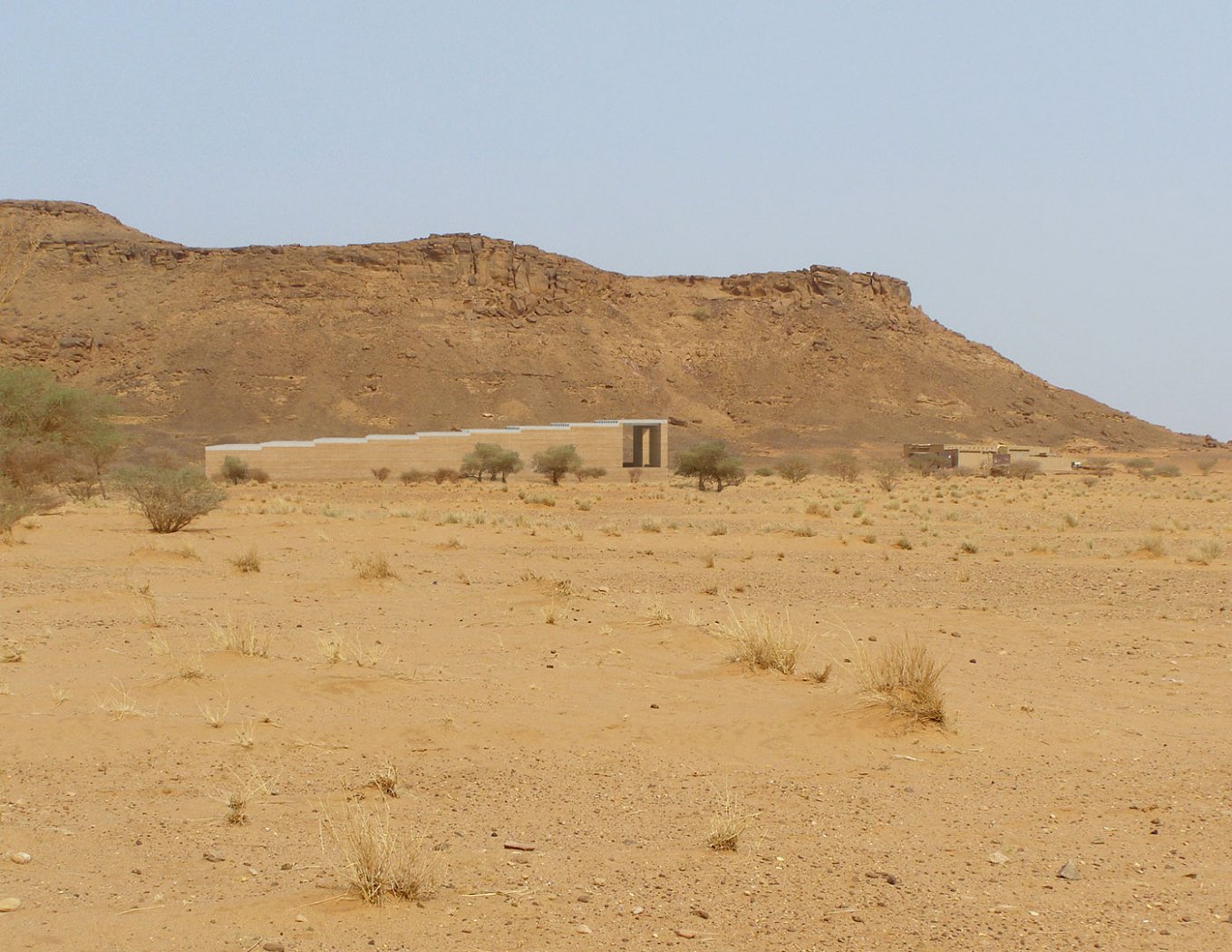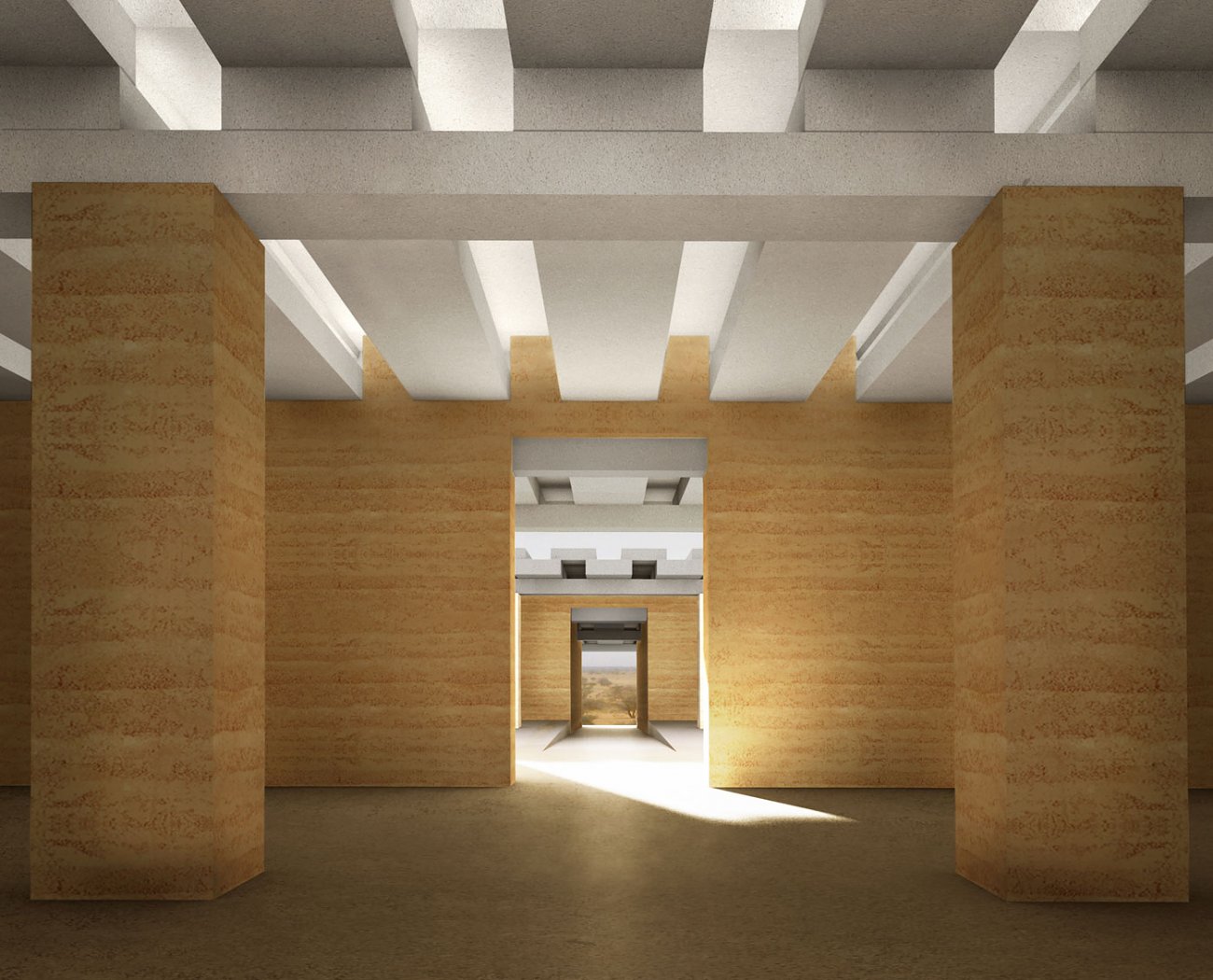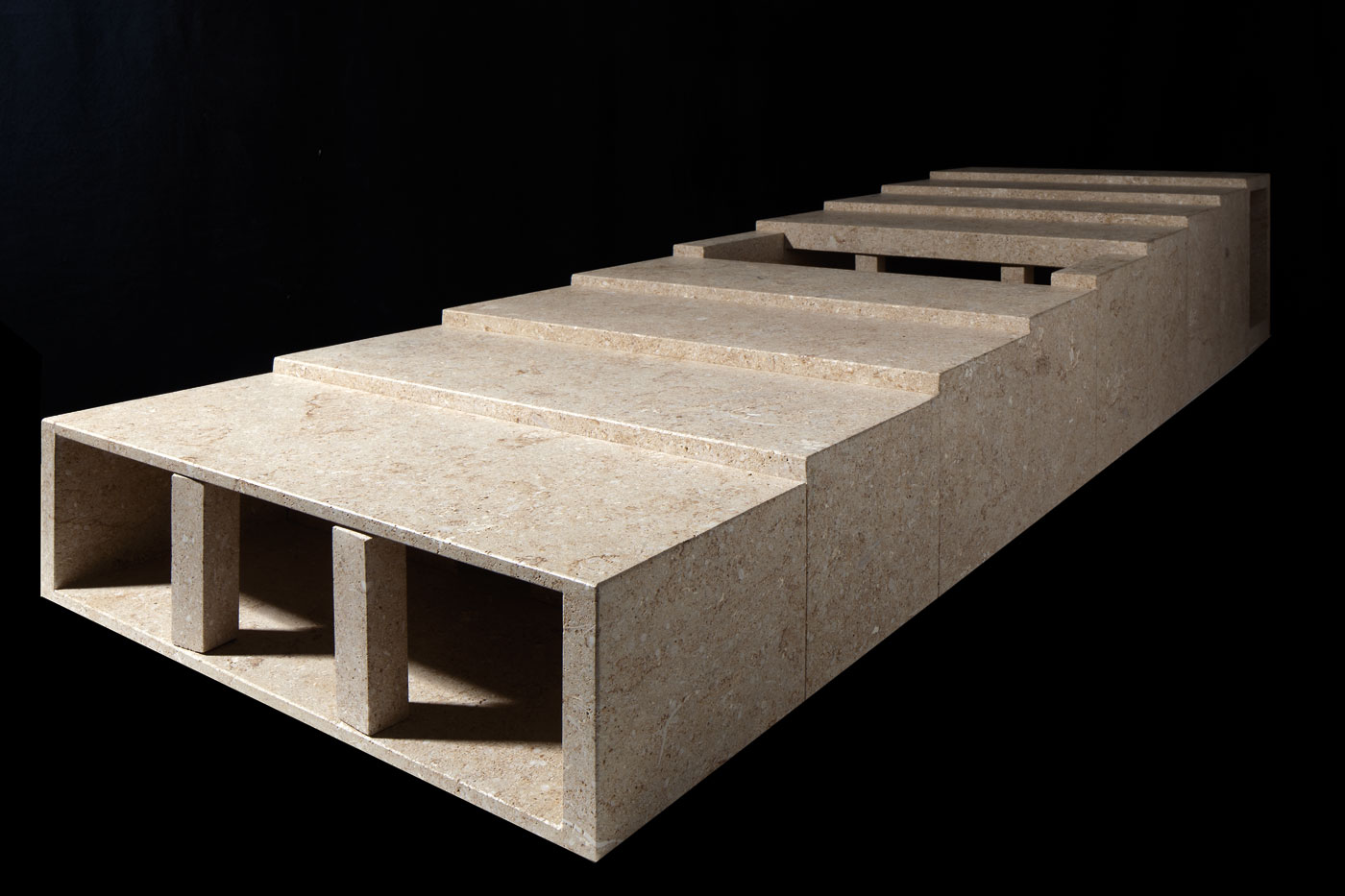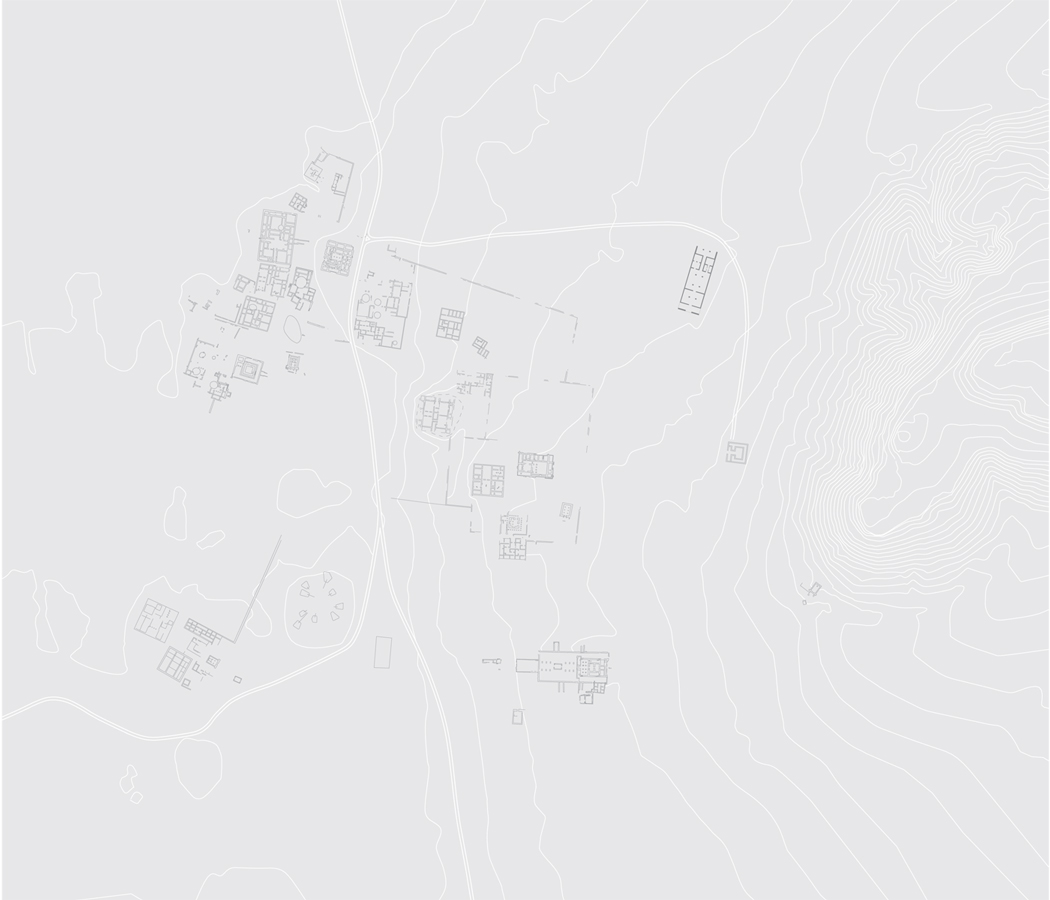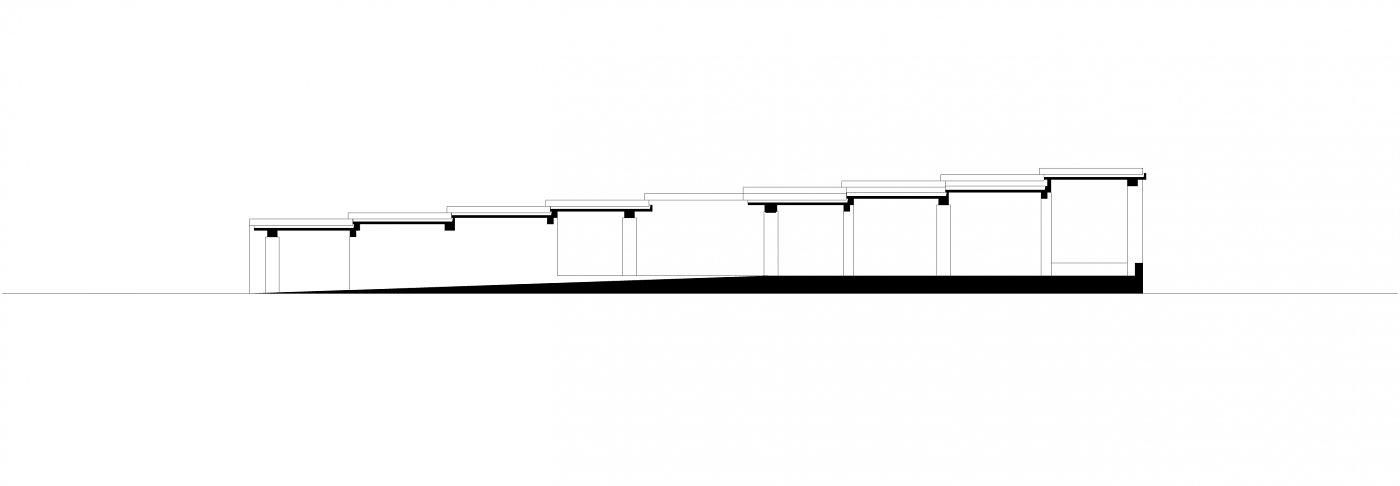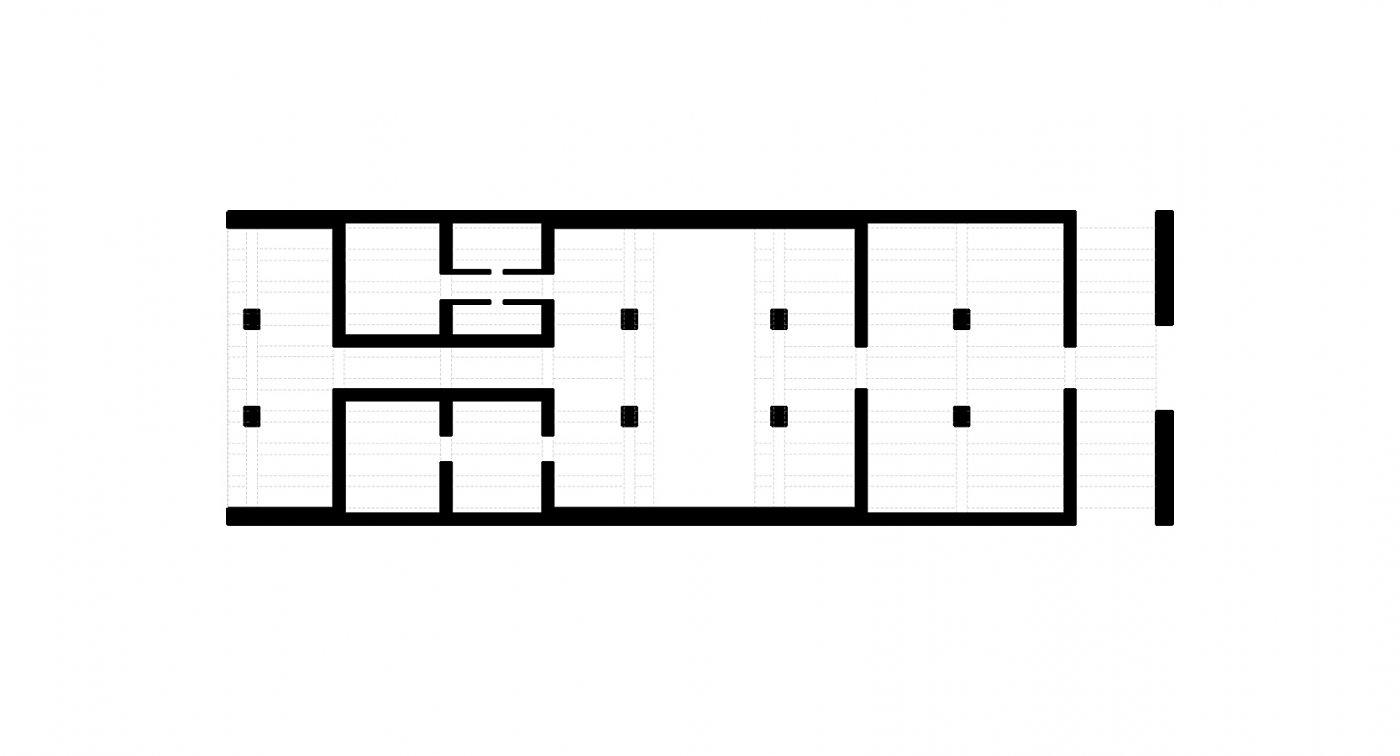☉ Naqa Museum is a winning proposal by David Chipperfield developed in 2008. It is located in Riyadh Saudi Arabia in a desert setting. Its scale is medium with a surface of 1.400 sqm. Key materials are concrete and stone.
Naqa is an ancient city in modern-day Sudan. Only accessible via sand tracks, it sits about fifty kilometres east of the Nile and is a three-hour drive from Khartoum. It is one of the largest historic sites in the country and contains the ruins of an ancient city that was once one of the centres of the Kingdom of Meroë. Naqa is believed to have been a trading station and a significant link between the Mediterranean and Africa. The site has two notable temples – one devoted to the Egyptian deity Amun and the other to the Nubian lion god Apedemak, which has a Roman kiosk nearby. The site is at the foot of the Jebel Naqa mountain, situated near a wadi (a desert valley) with an artesian well nearby to which Bedouin herders bring their flocks to drink.
Apart from a small watch house and a temporary archaeologists’ building, the area appears completely unspoiled.The new building is designed to protect part of the archaeological site from sun, sandstorms, rain and looters. It functions primarily as a facility for storing all transportable findings from the site in a secure environment, while also serving as a rudimentary exhibition hall. This approach merges the discovery, study and display of an artefact, integrating archaeological process and exhibition. The specific site was chosen at an appropriate distance from the Temple of Amun that does not interfere with the pristine setting of the temple ruins rising up from the sand. The museum is positioned on a raised plateau and its internal level is raised by a further 1.5 metres. The loggia at the southern end of the building offers a panoramic view of the temple silhouetted against the horizon.
The foundations will be constructed on the existing rock plateau beneath the sand. The outer walls of the building are to be constructed of compressed concrete with local sand and aggregates using traditional techniques. The roof structure will be prefabricated off site with individual elements placed in two layers, comparable to a simple brick-tile roof. These concrete ceiling elements are very pale, in contrast to the sandy colours of the concrete walls. A system of prefabricated elements generates a wedge-shaped longitudinal section, forming a very simple spatial sequence that begins with an arrival loggia, followed by a ramp, a courtyard, and an exhibition space, and culminates in a generous viewing loggia. Conceived as a ‘daylight museum’, the building is designed without glass and the exhibition spaces receive indirect light through the profiled roof construction.
